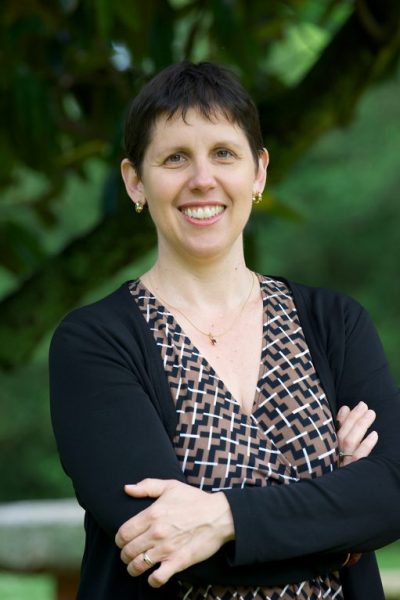Lynn Rainville Named Director of Institutional History at Washington and Lee
Lynn Rainville, community initiatives fellow at the University of Virginia’s Institute for Advanced Technology in the Humanities and former dean of Sweet Briar College, will be the inaugural Director of Institutional History at Washington and Lee University.
Rainville has worked at Sweet Briar for the past 18 years, as a member of the faculty from 2001-2008, and as research professor in the humanities and director of the Tusculum Institute for Virginia history and historic preservation from 2008-2019. She served as dean of the college from 2018-19. As dean, she was responsible for the college’s academic programs, including 53 faculty, a number of academic areas including the college’s history museum and art galleries, and the oversight of a multimillion dollar budget.
W&L President William C. Dudley announced Rainville’s appointment, which is effective July 1. It comes after a national search led by a seven-member committee composed of faculty and staff, with input from the campus and alumni community following a series of public presentations at W&L in February.
“I am pleased to find an accomplished scholar who is so well-suited for the scope and complexity of this work,” said Dudley. “As the ninth-oldest institution of higher education in the country, Washington and Lee has 270 years of rich history to explore. Lynn’s wide-ranging curiosity, expertise in Virginia history and infectious enthusiasm for her work, as well as her commitment to creatively involving students, faculty, alumni and the public, open up an exciting array of possibilities for taking full advantage of the educational potential of our campus.”
As Director of Institutional History, Rainville will lead the process of envisioning and developing a museum to explore the university’s history and its many connections to American history, and to create dynamic educational programming for the campus community and the public. Reporting to Dudley as part of his administrative cabinet, she will manage the assets, facilities, resources, staffing and planning associated with the university’s historic galleries and the University Collection of Art and History (UCAH). She will also collaborate with faculty, scholars and the UCAH staff to support curricular development, research projects, and exhibitions.
Rainville is a public historian and anthropologist with a B.A. in anthropology and history from Dartmouth College and an M.A. and Ph.D. in anthropology and archaeology from the University of Michigan. Prior to joining the faculty at Sweet Briar, she held teaching positions at the University of Michigan, Dartmouth College and the University of Virginia.
As director of the Tusculum Institute at Sweet Briar, she partnered with the Department of Historic Resources for the commonwealth of Virginia, Preservation Virginia and other historic agencies to preserve the region’s historic assets and promote the use of Virginia’s historic legacy as an educational resource. She also worked with students, faculty and K-12 teachers to provide education and outreach to the wider community and region.
Rainville is a member of the Virginia General Assembly’s African American Cultural Resources Task Force and treasurer of the Virginia History Forum. Her research is focused on sharing the untold stories of overlooked Virginians, studying enslaved communities, graveyards and cemeteries, segregated schools, World War I and town poor farms.
Over the past three decades, she has researched the histories of institutions including Dartmouth College, U.Va. and Sweet Briar, curated exhibitions on slavery and segregated schools and partnered with architects to design a reconstruction of an 18th-century home that was to serve as the headquarters for the Tusculum Institute. She has written four books on Virginia history: including “Invisible Founders: How Two Centuries of African American Families Transformed a Plantation into a College” (Berghahn Press, 2019), “Virginia and the Great War: Mobilization, Supply and Combat, 1914-1919” (McFarland Press, 2018), “Sweet Briar College” (Campus History Series, Arcadia Publishing, 2015, with Lisa N. Johnston), and “Hidden History: African American Cemeteries in Central Virginia” (University of Virginia Press, 2014).
As a public historian, Rainville lectures widely on topics ranging from the history of African-American cemeteries to Virginia’s role in the Great War. She has served as director of a number of historical projects, including a study of World War I memorials in Virginia, an ethnographic and historic study of an antebellum plantation, and a survey of African-American cemeteries in Virginia. Her current work in Virginia history includes a survey of town poor farms and an effort to locate and preserve slave graveyards in the commonwealth. She has received numerous grants and fellowships from organizations including Virginia Humanities, the National Trust for Historic Preservation, the National Endowment for the Humanities and the National Science Foundation. Her research has been featured in a variety of online publications and blogs, as well as on National Public Radio and in newspapers including The New York Times and The Washington Post.
“I am thrilled to join W&L as its first Director of Institutional History,” said Rainville. “In many ways this position is the culmination of my work to date: the chance to combine three decades of historic research, museum programming, public history and partnerships with local communities and national foundations. Washington and Lee’s decision to ‘tell our stories completely and honestly’ mirrors my research goals for Sweet Briar College’s complicated racial past, where I combined multiple disciplinary methods in my research and worked to bridge the divide between the academy and the public. I am looking forward to spending time in W&L’s archives, exploring its historic buildings and landscapes and joining with members of the community to learn more about the transformation of a Shenandoah Valley academy into a nationally recognized university.”
 Lynn Rainville (photo by Meridith De Avila Khan)
Lynn Rainville (photo by Meridith De Avila Khan)
You must be logged in to post a comment.